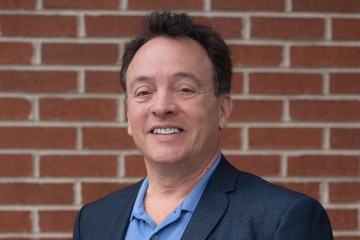The Education Gadfly Weekly: On teacher housing, is the juice worth the squeeze?
The Education Gadfly Weekly: On teacher housing, is the juice worth the squeeze?

On teacher housing, is the juice worth the squeeze?
In recent months, housing programs for school teachers have begun to receive high-profile attention. And with good reason: As costs of living have risen, teacher salaries have not kept pace, thereby decreasing some educators’ ability to live near their workplaces. But are such policies actually a good thing? In short: We really don’t know.
On teacher housing, is the juice worth the squeeze?
Idaho’s charter school law rewrite: Better, not perfect
ESSER’s sunset: Not a cut, but a return to normalcy
The impact of out-of-school enrichment activities on student skills
#907: How to do tutoring right, with Alan Safran
Cheers and Jeers: February 15, 2024
What we're reading this week: February 15, 2024

Idaho’s charter school law rewrite: Better, not perfect

ESSER’s sunset: Not a cut, but a return to normalcy

The impact of out-of-school enrichment activities on student skills

#907: How to do tutoring right, with Alan Safran

Cheers and Jeers: February 15, 2024

What we're reading this week: February 15, 2024

On teacher housing, is the juice worth the squeeze?
In recent months, teacher housing programs have begun to receive high-profile attention. And with good reason: As living costs have risen, teacher salaries have not kept pace, thereby decreasing many educators’ ability to live near their workplaces. In an ideal world, districts would just raise their salaries—after all, half of teachers say that salary increases that merely cover increases in the cost of living would motivate them to stay in the classroom—but political and resource constraints may limit this option. Add to the mix anxieties surrounding teacher recruitment and retention, and it’s hardly surprising that communities rural, suburban, and urban, from the east coast to Hawaii, have expanded efforts to improve educators’ access to housing.
Such efforts take a variety of forms. There are programs for which only educators qualify, but others also include first responders or those below a certain income threshold. Some assist with home purchases, including contributions to down payments, title fees, and closing costs. Others make rentals more affordable by providing vouchers or more affordable rents. Some rental properties are district-owned, while others operate through partnerships with private owners. Most teacher housing programs are district-level, but some are state-level or even federal. A handful of others are specific to individual charter school networks.
In sum, a variety of teacher housing efforts are underway, and their number seems to be mushrooming. But are they actually a good idea?
In short: We really don’t know.
The anecdotal evidence is encouraging, but there’s a real dearth of research on such incentives for either attracting or retaining teachers. As for what extant research does tell us, we know that compensation was a major factor for 42 percent of teachers who left the profession (although, paradoxically, it was also a reason for 34 percent to stay). But we also know that few teachers—a mere 11 percent—say that housing support, specifically, would make any difference for them.
What’s more, even if housing assistance would have an impact, many programs are painfully inefficient when it comes to timeframes or population served. In Silicon Valley’s Los Gatos, for example, ninety education professionals completed interest forms to become the first residents of the district’s only available teacher housing complex—which offers an underwhelming four units, thereby serving less than 5 percent of interested parties. Austin is planning to repurpose an underutilized site that the district already owns, which might seem efficient, except for the fact that the entire project will take some seven years to complete. Somehow I doubt that telling teachers they might qualify for workforce housing, two presidential administrations from now, is going to persuade many.
And that’s not the extent of the challenges. Many of the housing programs have such low income cutoffs that few teachers even qualify. Only lower-paid district employees ended up qualifying for a Los Angeles housing initiative that had been intended to serve teachers; while bus drivers and cafeteria workers certainly deserve housing support, the initiative was a failure in terms of its original goal. And the pressure for already-overworked superintendents to serve as “property developers” can’t be helping the exceptionally high turnover rate in that profession, either.
Finally, many teacher housing efforts suffer from serious messaging problems. Quite justifiably, given their credentials, teachers want to be treated more like professionals. But recent reports have celebrated solutions like tiny homes constructed by children and Habitat for Humanity charity projects; hailed parking lots as housing “panaceas”; and highlighted opportunities for teachers to collaborate after hours in their building’s laundry room. Even if many teachers end up pursuing these opportunities, surely no one can believe that such narratives will help them feel more respected.
To be sure, there are ways to address some of these problems. The most promising housing-voucher programs could be scaled to serve more teachers, and they could do so immediately, without waiting for construction. Targeting housing programs to teachers in the most understaffed areas, like instruction for English learners, special education, physical science, and foreign language, could better ensure that limited resources are being put to strategic ends. And the rhetoric around these efforts can surely be revised, such that teacher housing sounds less like charity and more like military housing or the forms of relocation assistance that other professional jobs frequently offer.
Above all, policymakers should ensure that their decision-making isn’t guided by the PR appeal of a flashy initiative and an aesthetic digital rendering of what a building might look like in 2027. First, are there sufficient funds that could instead be spent on raising teachers’ salaries—a less logistically challenging and likely more persuasive policy solution—or are the districts cash poor but property rich? If the answer is truly no, then will the proposed housing solution meet the needs of teachers in that community, and when will it do so? And will it bolster broader efforts to make the teaching profession more appealing? Policymakers must carefully evaluate whether proposed housing initiatives actually reflect the best use of their finite resources.

Idaho’s charter school law rewrite: Better, not perfect
Idaho’s public charter school law turned twenty-five last year. Over that quarter century, the statute has grown warts. It’s also too complicated, burdened by vestigial code and rules, and confusing to schools, authorizers,[1] and state education agencies alike.
The time for an update seems to have come. The “Accelerating Public Charter Schools Act” (a.k.a. HB422) passed out of the House recently on a vote of 66-3-1, passed out of the Senate Education Committee unanimously, and is expected to sail through the Senate in coming days.
Strong support for operational flexibilities
The updated statute seeks a balance between operator flexibility and accountability for performance, while also supporting the continued growth of Idaho’s charter sector, which has seen the addition of about forty new schools in the last eight years.
HB422 seeks to “reward public charter schools that meet their accountability measures with enhanced autonomy and freedom from regulatory burden.” Successful charter schools can earn autonomy. Those that have met all targets and satisfy all requirements over the terms of their contracts can renew for terms of twelve years. Longer terms mean that successful schools can spend less time worrying about renewal and more time educating students. This also saves time for the staff of the Idaho Public Charter School Commission, which authorizes 60-plus schools with a staff of three and a half employees.
Additional flexibility provided in the legislation would allow successful charter networks with multiple school sites to operate as a single local educational agency (LEA). This is common practice in other charter states and will enable Idaho networks to innovate in areas such as the cross-collateralization of debt for school facilities. This can drive down the costs of facility loans.
The bill also provides for “fast-tracked replication.” Schools that successfully complete at least one renewal cycle without conditions can clone an additional school—using the same model and serving some or all of the same grades—with paperwork and approval completing in a speedy forty-five days. This will allow successful schools that want to replicate themselves to spend less time navigating the regulatory process and more time planning their schools and finding teachers, leaders, and facilities. It should also save them some legal fees!
More transparency but light on results-based school accountability
On the accountability front, however, the pending legislation does some compromising, as has been the practice in Idaho, where parent choice and marketplace forces are the primary drivers of school accountability. On the plus side, the bill will allow “Revocation of a Charter.” Specifically, a charter may be terminated by its authorizer if, after fair notice, the school “commits a material and substantial violation of any of the terms, conditions, standards, or procedures required by this chapter or the performance certificate (including academic performance and growth).” This gives authorizers some discretion, but Idaho’s charter law (and charter program) has never been hawkish about closing schools for academic reasons. In fact, only nine charter schools have closed in Idaho since the early 2000s, and all were the result of financial mismanagement, low enrollment, or failure to maintain full accreditation.
Still, the “Accelerating Public Charter Schools Act” will encourage transparency around school performance. It requires authorizers to make school performance certificates—which must include student academic proficiency, student academic growth, and college and career readiness for high school students—available to the public and parents. It also requires an authorizer to “continually monitor the performance and legal compliance of the public charter schools it oversees, including collecting and analyzing data, and may conduct prearranged site visits, if needed, to support ongoing evaluation according to its performance certificate.” In this way, it is hoped that high-flying schools will be separated from struggling ones.
Then there’s the appeals process. If an authorizer does seek to revoke or non-renew a charter, that decision may be appealed to the Office of Administrative Hearings (OAH). This is a change from current law, which requires such appeals to go through the state board of education. The OAH was created in 2022 “to assure fair hearings without the perception of bias.” Whether this is an improvement won’t be known until the first case is brought to the OAH, but it is noteworthy that lawmakers are taking the decision of whether to approve the closure of a public school out of the hands of the state board of education.
HB422 also seeks to balance the role of authorizer as quality control agent with that of school support organization. Under current law, authorizers, especially the Idaho Public Charter School Commission and its seven-member board appointed by the governor, have struggled to balance oversight and school support. The new legislation tasks the state department of education with “enrolling charter schools in need of improvement in support and development programs, including but not limited to the Idaho Building Capacity Program.” The purpose of this program is to support Idaho’s lowest-performing schools in improving their instructional systems and targeting academic achievement. Another way to see it is as a last chance for a charter school to turn itself around or face revocation.
In public testimony, the primary author of HB422, Alex Adams of Governor Little’s office, made it clear that the bill is not perfect. It’s a balancing act. For other states, the parts most worthy of study and possibly embracing involve operational flexibility and the streamlining of the charter approval and renewal processes for high-performing schools. The Idaho approach to school performance has to be termed accountability-lite.
How does HB422 line up with national best practice?
I asked Todd Ziebarth at the National Alliance for Public Charter School what he thought of the changes in HB422 and he summarized it thusly:
HB 422 streamlines Idaho’s charter school law with the goal of balancing charter school autonomy and accountability. The bill largely accomplishes this goal. As a result, charter schools in Idaho will have more flexibility to innovate while still being held accountable for results.
HB 422 moves the Idaho charter school law closer to the National Alliance’s model law in two important ways. First, it requires that the terms of a charter school’s initial contract must be for six years, giving a new school a sufficient amount of time to prove its worth before it faces renewal. Second, it allows a high-performing charter school to have its contract renewed for up to twelve years, allowing the school to spend more time focused on educating students instead of completing bureaucratic paperwork requirements.
While HB 422 represents forward progress for the charter school sector in Idaho, more work remains to be done to provide charter schools even more flexibility to innovate, especially as it relates to teacher policies, and more equitable funding and facilities support—all while holding the line on ensuring that charter schools deliver results for Idaho’s families and taxpayers.
[1] In Idaho, the primary authorizer is the Idaho Public Charter School Commission. A handful of school districts authorize schools, as well. State colleges, universities, and nonsectarian colleges are also allowed to authorize schools, but none has yet taken this role on.

ESSER’s sunset: Not a cut, but a return to normalcy
As we approach September 2024, the education community is bracing for the expiration of Elementary and Secondary School Emergency Relief (ESSER) funds. There’s a growing narrative that this marks a significant funding cut for schools. In places like Cleveland, this framing has been front and center.
Nobody likes to lose money. And if schools were facing steep budget cuts due to an unexpected loss of funding, this take would be understandable. But that’s not the case with pandemic relief dollars. ESSER funds have always been temporary. It’s right there in the name—these were emergency relief funds.
ESSER was the U.S. government’s swift response to the Covid-19 pandemic, a lifeline thrown to schools grappling with the herculean task of continuing education amid closures, remote learning challenges, and myriad health concerns. This funding was explicitly temporary, a bridge to help schools navigate the treacherous waters of a global pandemic and its immediate aftermath, not a permanent augmentation to their annual budgets. Schools were repeatedly and wisely advised to spend the dollars on non-recurring expenses to avoid creating financial cliffs when the funding inevitably expired.
And yet, it appears this advice went unheeded in many communities.
Analysts and advocates alike now argue that the cessation of ESSER funds will leave schools in the lurch, creating gaping holes in their budgets that they insist must be filled. For districts like Columbus City Schools, which used ESSER dollars for recurring expenses, including hiring more than 600 full-time staff–despite clear warnings to the contrary—this is undoubtedly the case. And unfortunately, taxpayers in these districts will likely be called upon to open their pocketbooks and fill the void. In some districts, like Cleveland, where philanthropic support previously being directed to projects identified by students has been repurposed to narrow the gap, the “solutions” will be even more disheartening.
It didn’t have to be this way. And if local leaders hadn’t purposely ignored the temporary nature of these funds, it wouldn’t have been. There is, quite frankly, no excuse for it. Choosing to direct relief funding toward permanent and recurring expenses is like using a one-time tax refund on a car down payment that you can’t afford only to be left scrambling when the regular monthly payments kick in.
And yet, it’s important not to forget that these funds served an important public purpose. First, ESSER dollars were a stabilization mechanism, helping to prevent catastrophic educational and operational disruptions during the pandemic. Second, they provided resources for innovation, enabling schools to experiment with remote learning technologies and hybrid educational models. Third, they empowered schools to adapt to an environment where health considerations had become just as critical as educational outcomes. And, finally, a portion were to be used to help students catch up academically.
From this perspective, it’s clear that ESSER funds have already achieved much of what they were intended to do. Schools have been stabilized. Innovations have been integrated into daily operations. Adaptations to the “new normal” of the post-pandemic world have already been made. Schools are arguably in a better position to face future challenges than they were pre-pandemic, thanks in large part to the temporary boost provided by ESSER. Of course, all is not rosy. Both nationally and in Ohio, despite some academic recovery, pandemic learning loss—especially for the most disadvantaged students—remains.
The upcoming expiration of ESSER funds signals a crucible moment. District and school leaders must assess which pandemic-era innovations—tutoring, additional social and emotional support, afterschool programming, etc.—are worth maintaining, and at what cost. It’s an opportunity to reevaluate budgets, prioritize spending, and ensure that the gains made during the pandemic are not lost, but rather integrated into a sustainable financial structure.
For their part, policymakers must independently determine which pandemic-era interventions most impacted student learning and whether there are promising ESSER-era expenditures that should become a regular part of state funding formulas. At the same time, state leaders should be prepared to address the budget cut framing that will inevitably occur this fall. The expiration of temporary federal funds is not a credible argument to malign state school funding investments—no matter how loudly some folks might say otherwise.
The end of ESSER funding should not be viewed as a crisis but as an expected return to a pre-pandemic state. It’s a moment to take stock, to learn from our experiences, and to move forward with a clearer understanding of what our schools need to thrive in a rapidly changing world. Let’s not be alarmist about the expiration of temporary funds. Instead, let’s focus on building a robust and sustainable education system for the future.

The impact of out-of-school enrichment activities on student skills
A new report suggests that too much time spent on enrichment activities outside of school is a harmful double whammy for young people, as it stalls cognitive skill growth and induces a decline in non-cognitive skills. Perhaps even worse, there appears to be very little positive benefit associated with even modest amounts of enrichment. While the analysts’ math checks out, parents and pundits alike will still have questions.
Data come from the Panel Study of Income Dynamics (PSID), touted as the world’s longest running nationally representative panel survey, with almost fifty years of data on the same families and their descendants. University of Georgia researchers Carolina and Gregorio Caetano, along with Eric Nielsen of the Federal Reserve Board, focus on ten years of data from the PSID’s Child Development Supplement (CDS). Specifically, they zero in on the 1997, 2002, and 2007 waves of the CDS, which include time-diary data of students from pre-K through twelfth grade—reported by children or their parents, depending on age—as well as measures of cognitive and noncognitive skills. The robust data also allow the analysts to build controls related to child, family, and environmental characteristics.
The sample consists of 4,330 children ranging in age from five to eighteen years. We get no detail on how these children were specifically chosen. While the grade ranges of pre-K–5, 6–8, and 9–12 are roughly equally represented in the sample, with about one-third of the observations in each, other demographic details provided don’t seem particularly representative of the population at large. Approximately 40 percent of the children are Black, and 7 percent are Hispanic. Twenty-six percent attend a gifted program—far above the current 6 percent as reported by NAGC—8 percent attend a special education program, 1 percent are homeschooled, and 8 percent attend a private school.
Cognitive skills are measured by three assessments: the standardized letter-word, applied problems, and passage comprehension subtests of the Woodcock Johnson Revised Tests of Achievement, results of which are available for each CDS wave. Non-cognitive skills are measured in thirty-six different dimensions by parents’ answers to CDS survey questions and include things like “cheats or tells lies,” “argues too much,” “admired by other children,” and “does neat careful work.” Time diaries from CDS include full twenty-four-hour breakdowns of one random weekday and one random weekend day for each child. The original data coded activities into more than 300 categories. The present study aggregates these into eight: Class time, sleep, play and social activities, passive leisure, duties/chores, enrichment activities, broader enrichment activities, and a miscellaneous category for everything else.
The analysts define enrichment as “the kinds of activities that are typically considered to be investments in children’s skills” undertaken outside of school time. Their main enrichment category includes homework, reading for pleasure, before- and after-school programs, non-academic lessons (like cooking or violin), and other academic lessons (like tutoring or math camp). The “broader enrichment” category adds other familiar activities like structured team sports, art classes, museum excursions, and volunteering. While no two parents would likely break out these activities the same way, the analysts test their models with both enrichment categories and find similar results. They also perform robustness checks using different aggregations of the non-cognitive skills categories.
The model produces some attention-getting results. The full-sample analysis indicates that that enrichment time, when corrected for selection on unobservable factors that might influence the findings, has no significant effect on cognitive skills—the very goal for which the activities were undertaken—and a concurrent significant, negative effect on non-cognitive skills. These negative effects were visible and significant across all grade levels, but most pronounced at the high school level. On average, children in the sample spend about forty-five minutes per day on enrichment activities, but that adds up over a typical week, driving increasing the downward pressure on non-cognitive skills with each additional hour.
What’s going on with these counter-intuitive findings? The full answer is beyond the realm of this paper, but the analysts have some ideas. The simplest is that homework, the largest time use in the enrichment category (66 percent) and also tested by the analysts in isolation from all other activities in the category, doesn’t serve to increase cognitive skills as intended. One clear question here is whether the activities are perhaps disconnected from the cognitive skills tests given. Parents and pundits know that many enrichment activities are general in nature—aimed at developing well-rounded kiddos—but homework and tutoring are typically specific to classes and tests. Would the model show different results if actual class grades/GPAs/state test scores were used to indicate cognitive skills growth? Feels like a robustness check worth running! Less in question, though, seems to be the increase in negative aspects of measured non-cognitive skills. The more enrichment engaged in, the sadder, more irritable, and more inferior to peers the sample students felt. The higher homework load traditionally experienced by high schoolers would match the more pronounced effects seen at the 9–12 grade level.
Another suggestion is that it’s all a matter of time use substitution. Every time use in the enrichment category (but especially homework) is taking up hours that could be used for other activities—the analysts suggest socializing and sleeping—that research indicates are correlated with improved non-cognitive skills. Older children, with more demands on their time as they approach high school graduation, are apparently choosing to forgo these beneficial activities more than their younger brothers and sisters—which probably accords with parental experience outside the confines of a dataset—and are experiencing the negative effects more strongly.
It is unlikely that the authors were trying to antagonize parents working hard to do right by their children, but the results of this study are apt to dismay and alarm some parents. Questions may linger as to the sample and the methodology, but the main point stands: Finding the perfect balance of out-of-school activities to maximize cognitive and non-cognitive skill building for kids is not as simple as it seems. This research doesn’t give a solid answer as to what the balance should be, but the authors’ outcomes hint that it could be a different mix than many families have experienced.
SOURCE: Carolina Caetano, Gregorio Caetano, and Eric Nielsen, “Are children spending too much time on enrichment activities?” Economics of Education Review (January 2024).

#907: How to do tutoring right, with Alan Safran
On this week’s Education Gadfly Show podcast, Alan Safran, the CEO and co-founder of Saga Education, joins Mike and David to discuss best practices for high-impact tutoring. Then, on the Research Minute, Adam reports on a new study investigating the impacts of computer science education on early career outcomes.
Recommended content:
- “Could tutoring be the best tool for fighting learning loss?” —Anna Nordberg, The New York Times
- “White house calls for focus on tutoring, summer school, absenteeism as pandemic aid winds down” —Chalkbeat
- Liu, Jing, Cameron Conrad, and David Blazar, “Computer Science for All? The Impact of High School Computer Science Courses on College Majors and Earnings,” Annenberg Institute at Brown University (January 2024).
Feedback Welcome: Have ideas for improving our podcast? Send them to Daniel Buck at [email protected].

Cheers and Jeers: February 15, 2024
Cheers
- Houston schools will have eight additional instructional days next year. —Houston Landing
- Low test scores can motivate students to work harder and learn more. —Jay Mathews, The Washington Post
Jeers
- A remote learning during a winter storm in New York City was beset with technical issues. —New York Times
- Brookline High School in Massachusetts is considering eliminating English after axing honors socials studies in 2019. —Boston Globe

What we're reading this week: February 15, 2024
- Forty-four percent of Gen Z men say they had no romantic relationships as teenagers, compared to 32 percent of Millennial men, 23 percent of Gen X men, and 20 percent of Boomer men. —American Institute for Boys and Men
- “Wrong ideas about teacher pay, happiness may keep students from the profession” —Chad Aldeman, The 74
Gadfly Archive

The Education Gadfly Weekly: Markets, testing, and accountability

The Education Gadfly Weekly: Watch out, reformers, you're about to get DeVossed

The Education Gadfly Weekly: Trump's only 50-state school-choice option

The Education Gadfly Weekly: Trump's school choice plan likely to leave details to the states

The Education Gadfly Weekly: When one reform door closes, the Overton window opens

The Education Gadfly Weekly: Vouchers have changed. Maybe your position should change, too.

The Education Gadfly Weekly: 2017, the year we could come back together again

The Education Gadfly Weekly: 2016, the year we came apart

The Education Gadfly Weekly: Why bad teachers rarely get fired

The Education Gadfly Weekly: Betsy DeVos's real record in Michigan

The Education Gadfly Weekly: A victory for high achievers in the ESSA regulations
